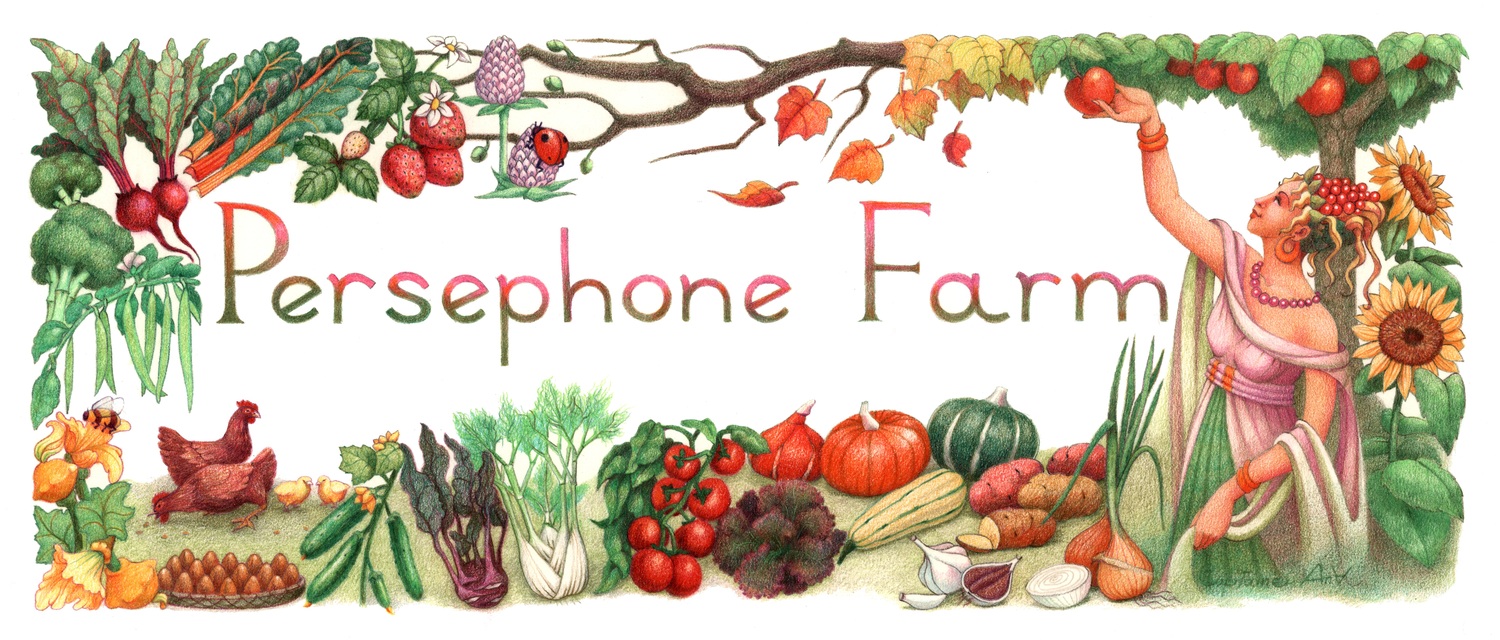Here at Persephone we are continually searching for hardy crops we can plant in the late summer and early fall (when our heavy clay soil is not too wet) which will survive and feed us and you over the winter and the following spring. Several years ago our friend John from Gathering Together Farm suggested we try growing fava beans. "You can plant them in the fall and get a crop you can bring to market in early June," he said. And he's right; that's just what happened in 2012 and '13. Then came the cold snap of December, 2013, with its single-digit temperatures, which killed the small fava plants we had seeded two months before. What to do? We had grown to love these beans, both as an early- summer taste treat and for the income they helped bring from June markets. I asked fellow farmers if anyone had ever seeded favas in the propagation greenhouse in the winter, then transplanted them outdoors in the new year. Several growers said they had, and were eager to share tips (one of the many wonderful things about the Oregon farming community). I hesitated for a while longer, pondering what might be the perfect seeding date and variety, whether to seed in the greenhouse or directly into the soil....until our friend Casey from Oakhill Organics sent me a note which concluded with the words, "Go for it!" Which was just the encouragement I needed to seed the large beans and transplant them some weeks later. Mid-winter soil conditions defied machinery but we found a spot to plug the beans in by hand.
I watched the plants anxiously over the winter for signs of growth and development. Could this really work? Would I need to fertilize? Would we ever see beans? Slowly but surely the plants grew tall, then flowered. One day on my weekly monitoring walk I noted with dismay that the oldest flowers were dying. But wait! There were tiny bean pods (and hope) in their place!
This morning we harvested the first favas of the year. They arrive a few weeks later than usual, but they are such a bright and vibrant green that they nearly scream with good health. The beans are still young and tender and the inner skins do not need to be removed. I ate them fresh from the pods in the field and gave thanks for all the farmers who introduced us to favas, and helped us get a crop this year after all. Then I thanked the bean vines which had been growing steadily through the winter, oblivious to my doubts. I imagine them saying, "Who has time for that?!"
I don't know about you, but when I taste these bright green fruits of the earth I feel
ALIVE.
Rob's Fabulous Favamole
3 1/2 lbs. Whole Favas
Shell and boil beans in salted water for 20 minutes
Blend or mash with:
1 1/2 Tablespoons lemon juice (or more, to taste)
1/2 teaspoon salt
2 cloves garlic or one garlic whistle, minced
Serve as a dip or spread. Makes almost three cups.
Variations: Try adding chopped cilantro, dill, or spinach!
Yum.

